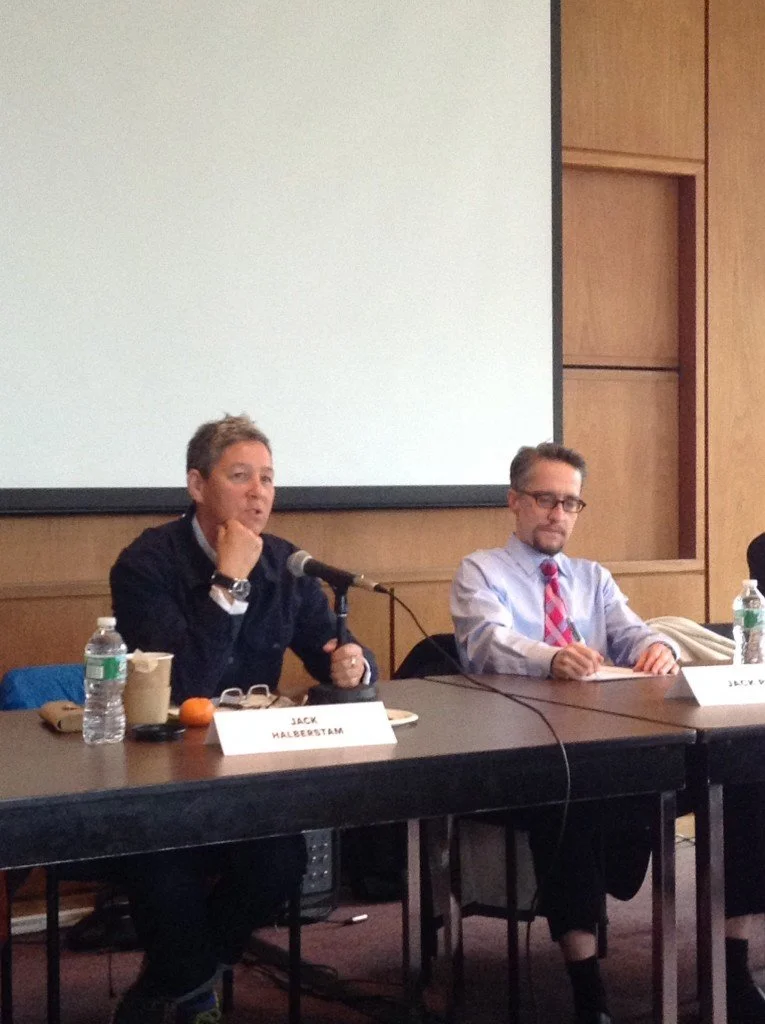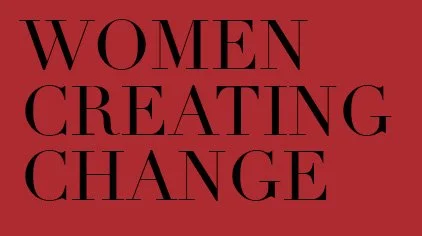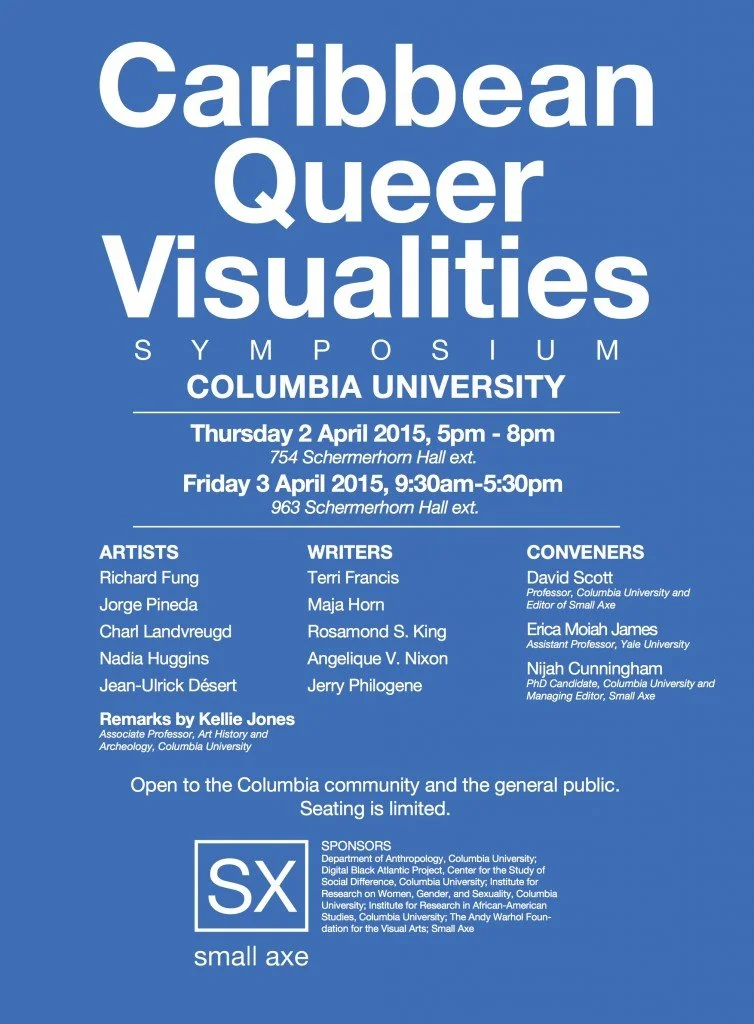JUST PUBLISHED: Farah Griffin's "Intellectual History of Black Women"
Toward an Intellectual History of Black Women, edited by Farah J. Griffin, co-director of the CSSD working group of the same name and Professor of English and African-American Studies at Columbia University, has been published by University of North Carolina Press.
Professor Griffin's project co-directors Mia E. Bay (Rutgers University), Martha S. Jones (University of Michigan), and Barbara D. Savage (University of Pennsylvania) also co-edited the volume of essays in a passionate collective effort that spanned nine years.
The edited volume presents the work of black women writers, educators, activists, religious leaders, and social reformers in the United States, Africa, and the Caribbean. Recovering the contributions of thinkers marginalized by both their race and their gender, the 15 essays collected in Toward an Intellectual History of Black Women uncover the ideas of both formally educated and self-taught thinkers.
CSSD hosted one of four meetings held to foster discussion and criticism of the commissioned essays by colleagues and graduate students. Ultimately, the scholars planned to move intellectual inquiry "beyond the 'Great Men' paradigm" and lift up Black women's own intellectual achievements. The published result is an innovative volume that addresses topics ranging from religion and slavery to the politicized and gendered reappraisal of the black female body in contemporary culture.
The book is featured in the May issue of Essence Magazine and on the University of Pennsylvania and University of Michigan websites. Copies can be purchased here.
ROUNDTABLE Keywords: Trans
On April 9th, the Center for the Study of Social Difference and the Women's, Gender, and Sexuality Studies Council co-sponsored the roundtable discussion Keywords: TRANS.
The Keyword panel comprised Jack Halberstam, Professor of American Studies and Ethnicity, Gender Studies and Comparative Literature, University of Southern California; Jack Pula, Instructor of Psychiatry, College of Physicians & Surgeons, Columbia University and Chairperson of the Transgender Committee, Association of Gay and Lesbian Psychiatrists; and Yasmine Ergas, Co-Chair of the Women’s, Gender & Sexuality Studies Council, Director of the Gender & Public Policy Specialization, and Lecturer in the Discipline of International and Public Affairs, SIPA. The program was moderated by Jean Howard, CSSD Director, George Delacorte Professor in the Humanities and Chair, Department of English and Comparative Literature, Columbia University.
Professor Halberstam spoke about artist Sara Davidmann's photo series chronicling the life of Davidmann's Uncle Ken, a married man who was trans* and simultaneously lived as K, something Ken and wife Hazel kept a secret until their deaths. Halberstam said K's life showed how trans* lives disrupted linear narratives and traditional ways of writing history. Halberstam argued that it is difficult to tell trans* histories because terms and definitions change so quickly and that scholars have focused on histories of violence at the expense of narratives about silence and secrecy. Halberstam also explained that trans* lives aren’t isolated from the stories of everyone else in their lives. Social norms and dominant categories affect the trans* person and influence the relationships they have. Halberstam suggested that scholars think about parallel lives in the experience of trans* persons so that in writing a narrative, no part of their life is erased.
Jack Pula spoke about working professionally on gender dysphoria as a trans* man. Acknowledging that political controversy has followed psychiatrists’ definitions of gender identity, Pula considered how to combine subjective and objective forms of knowledge to make satisfactory claims about gender.
Pula warned that medicine and psychology often fall prey to reductive thinking, especially around identities that are known subjectively. Since language cannot capture all oppressed gender categories, it can itself become oppressive. Pula connected to Halberstam’s point about the difficulties inherent in using linear narrative to explain K and her gender identity. Pula argued that the etymology of identity could not begin with medicine and psychology because gender is first and foremost a subjective experience.
Yasmine Ergas examined the inchoate nature of the prefix "trans" and that "translation" was a process. In Ergas’s view, "trans-" as a prefix was insufficient, but still came closest to what it means to cross boundaries. Ergas shared how transnational surrogacy and adoption often leave children stateless and parentless. In its worst incarnation, transnational surrogacy has led to human trafficking.
For children, "trans-" is a matter of civic belonging. Ergas asserted that transnationalism challenged the presumption of national exclusivity and the processes of immigration, civil marriage, and the acceptance of educational credentials. Because of these structures, “transnational” still challenges a monopolistic system that, with limited exceptions, is based on an either/or binary. For surrogate children abandoned by their sponsors and who have no tie to national kin, this can mean existing in a legal no-man’s land. In the end, “transnational” remains anchored in the idea of nations.
The Q&A that followed the panel helped to weave together the presentations. Halberstam noted that just as "transnationalism" assumes the stability of the nation, "transgender" demonstrates the violence of gender dichotomies. Euro-American dichotomies of nation or gender continue to perpetuate colonialism and structure how scholars frame their research and get it funded. For Halberstam, transnationalism revealed how Euro-American constructions of transgender obscure other cultural and gender norms.
An audience member who saw limitations with the prefix "trans-" asked for alternatives. Ergas explained that dropping the prefix doesn’t obliterate the core words of nation or gender. In a sense, "trans-" implied a patchwork, she argued. Halberstam stated that people assemble under the heading trans* but often acknowledge more differences than similarities. The panel ended with an eye on the future: youth today speak more fluently than ever before about trans* life and this suggests the possibility for more humane understandings of individuals connected to the word.
Contributed by George Aumoithe, Graduate Assistant, Center for the Study of Social Difference and Ph.D. candidate in American history. Images of 1) K, Digital print of 1954 photograph with hand-tinting and acrylic paint, 2013 by Sara Davidmann 2) Jack Halberstam and Jack Pula 3) Jack Pula and Yasmine Ergas. Last two images: 2015 by George Aumoithe.
ROUNDTABLE: Women Mobilizing Memory "Keywords"
Vulnerability. Reaction. Privilege. Heritage. Utopia. What associations do these “keywords” evoke? What concepts do they represent? How are these ideas used by scholars, or put into practice by activists? What kinds of work can we do with a keyword, what conversations can keywords unlock?
These were some of the questions asked at a recent roundtable discussion by Women Mobilizing Memory, a CSSD working group exploring issues of memory, witnessing, testimony, and trauma from a cross-cultural feminist perspective. For this project, students in graduate programs at Sabancı University (Istanbul), Columbia University, and New York University teamed up in pairs, selected their keywords, and finally presented the fruits of their collaboration in the form of a roundtable at the Columbia campus in New York.
Reflecting on the circumstances in which their discussion took place, Alyssa Greene (Columbia) and Armanc Yıldız (Sabancı University) considered the keyword privilege, acknowledging the immense institutional privilege that enabled the roundtable, and by extension their own critical examination of the word “privilege” itself. Their presentation urged a consideration of how privilege can easily be forgotten by those who benefit from it. The duo did not necessarily condemn privilege, but noted that it was an “unevenly distributed” resource, creating all kinds of differences between those it touches and those it does not. These differences can silence certain conversations, but they can also produce other kinds—like Greene and Yıldız’s reflections on how privilege made their conversation possible.
In a similar vein, the keyword reaction sparked thoughts on the role of the environment where groups like Women Mobilizing Memory do their work. Dilara Çalışkan (Sabancı) and Andrea Crow (Columbia) suggested that a “critical attention to historic and economic forces” is necessary. For example, how does the physical location of this roundtable at Columbia University, or the fact of it being conducted in English, shape the kind of work being done? “Reaction” can be an emotional response that tells us something about how we relate to the ideas, people, and circumstances that surround us. In a feminist perspective, reactions can be a revealing part of academic work.
The issue of translation, both literal and figurative, came up in the work of Nicole Gervasio (Columbia) and Bürge Abiral (Sabancı) on vulnerability. There is no precise translation of “vulnerability” in Turkish. The Turkish equivalent would mean something like “weakness” or “exposure to the possibility of being harmed.” Their co-written paper pointed out that vulnerability has become “not just a keyword, but a keystone” in the #blacklivesmatter movement: the practice of “die-ins” works as a deliberate public display of vulnerability. Vulnerability can be leveraged as a form of strength and protest, yet vulnerability can also be misappropriated by perpetrators of violence to justify their actions.
A common feature of the five keywords is that they have widely varying meanings that depend on context. Such was the case with utopia, analyzed by R. Ertug Altinay (NYU) and Pınar Ensari (Sabancı). The pair cautioned against an association of utopia with liberal ideals and progressive politics. Utopia has a dark side, too: utopia produces difference and exclusion—what is a utopian vision for the group envisioning it can easily become dystopian for other groups. With heritage as well, chosen by Henry Castillo (NYU) and Leticia Robles-Moreno (NYU), perspective matters immensely. The pair emphasized a distinction between official and unofficial forms of heritage. One is sanctioned by state and government while the other is constructed within the local environment of a specific community. Castillo provocatively asserted that heritage, in this latter sense, is the memory of individuals and communities—not an object or material possession. Yet it is embodied, too: Robles-Moreno continued the discussion by suggesting that the female body can transmit heritage biologically and symbolically through generation.
Contributed by Grace Delmolino, PhD Candidate in Italian/ICLS and 2014-15 IRWGS Graduate Fellow
LECTURE: Ron Suskind on "Narratives of Earned Hope: Or the Ways Adversity Can Build Compensatory Strengths"
Speaking on Wednesday, March 25th before an audience sponsored by the Center for the Study of Social Difference's Future of Disability Studies workshop, Ron Suskind shared his story about pursuing a demanding career in investigative journalism while raising his autistic son Owen. Whether explaining socio-economics in the inner-city, public policy, or his own family, Suskind argued that adversity was a necessary precondition in order to produce insightful journalism.
Suskind won the Pulitzer Prize for Feature Writing in 1995 after publishing a series of articles that became his first book A Hope in the Unseen. The book describes the life of Cedric Jennings, who grew up in inner city Washington, DC before attending Brown University. Suskind followed with three books about the George W. Bush administration’s planning for the Iraq War, their post-9/11 intelligence activities, and their response to the 2007-2008 financial crisis.
To write about Owen in Life, Animated, however, Suskind wrestled with how to treat his family with the same tough standards that won him wide acclaim for his previous reporting. Suskind employed many of the same methods when interviewing his wife Cornelia, their eldest son Walter, and Owen himself, who now lives independently of his family.
When Owen was first born, his family noticed that he did not exhibit the same interpersonal skills—namely eye contact—that most children acquired by his age. Only after the family sat down to watch The Little Mermaid did Owen sustain eye contact with them. This observation led Suskind and Cornelia to use the personas of Disney characters to communicate with Owen.
One evening, after Suskind and Cornelia put Owen to bed, Suskind snuck into Owen’s bedroom with a puppet of Genie from the movie Aladdin. When he popped up from underneath Owen’s bedspread with Genie, Owen had his first extended conversation with his father for the very first time.
Knowing that Disney films would enable Owen to speak about his feelings, Suskind and his family watched hundreds of hours as the basis for dialogue.
Today, Owen is working with filmmaker Roger Williams to produce a documentary about A Life, Animated.
While writing about his family for a public audience was difficult, Suskind argued that journalism was capable of conveying both the joy and pain of family life and especially for families living with disability. While interviewing his family members revealed painful memories, it was also a therapeutic process. Suskind exhorted the audience of journalists and scholars to "seek the jewel." He concluded, "Human beings are not cardboard cutouts. We all have a heart and a soul.”
Interviewing his family forced them to remember a past when Owen’s condition was opaque, but the process of narrating their journey helped place their present-day triumphs in a larger context of "earned hope." For families with disability, Suskind's Life, Animated serves as a template for how to help others understand disability through personal narrative.
Contributed by George Aumoithe, Graduate Assistant, Center for the Study of Social Difference
Image of Ron Suskind in the World Room at Pulitzer Hall at Columbia University in the City of New York, 2015, by George Aumoithe.
ART EXHIBIT: "Die Presse" Reviews "Mobilizing Memory" in Vienna
Vienna's "Die Presse" reviewed the "Mobilizing Memory" exhibit that was created by the CSSD working group Women Mobilizing Memory and launched in Istanbul in 2014.
“‘Mobilizing Memory:’ Armenian Women Who Don’t Forget”
Anne-Catherine Simon (March 31, 2015, Die Presse)
“Mobilizing Memory” shows how women use memory to practice resistance to oppression: a politically charged show in Vienna.
They’re called Saturday Mothers. Every Saturday for twenty years, women have been standing on the street, in Galatasaray or in another Turkish square. They hold up pictures of their sons. Or their husbands. They are officially counted as missing; in reality, they were murdered for political reasons.
“The mothers’ tenacity in witnessing to this is the strongest form of resistance,” says Işın Önol. The artist comes from Istanbul and has lived in Vienna for five years. Here she has organized a powerful exhibition about forms of female, and sometimes publically celebrated, memory. “Mobilizing Memory” will be on display through Friday and could hardly leave the viewer cold. The piece by Argentinian-born Silvina Der-Meguerditchian was developed specifically for the Vienna show and especially is noteworthy, just weeks before the memorial day marking the deportation of Armenian intellectuals from Istanbul 100 years ago, the beginning of the murder of hundreds of thousands of Armenians. Armenian descendants of survivors living in Vienna knitted together their old family photos—literally, with wool—into a kind of Anatolian carpet. On the white screen that comprises the back side of the piece is a video showing the women in the midst of this collaborative memory work. The photos show families together before the camera, who were never together again after the genocide. The family of the artist also shared this fate; Silvina Der-Meguerditchian is the granddaughter of displaced Armenians.
Memory Work in Vienna
The knitwork shows one of the unique aspects of this exhibition – it not only depicts memory, but also generated memory in its workshops. How does it affect a people with no national memory culture, like the Kurds? On akakurdistan.com, Susan Meiselas has tried for years to fill in these gaps. For “Mobilizing Memory,” she also held a workshop with women from Iran, Iraq, Syria, and Turkey. “In Vienna we continued collecting,” says Önol. Denise Sözen in turn interviewed residents of the Armenian neighborhood in Los Angeles.
The exhibit was already on display in a similar form in Istanbul, the idea of which came from a feminist research project by American and Turkish academics. “I like using the image of the unbroken camera,” says curator Işın Önol. “When political violence takes place in public spaces in Turkey, the story usually is, ‘unfortunately, the security camera was broken when it happened.’ For me, the witnesses are unbroken cameras.”
“Mobilizing Memory.” On display until Friday, April 3, in the Kunsthalle Exnergasse, Währingerstraße 59, Vienna 1090.
Translation: Alyssa Greene
SYMPOSIUM: Caribbean Queer Visualities, April 2-3, 2015, Co-sponsored by Digital Black Atlantic Project
Caribbean Queer Visualities, co-sponsored by the CCSD working group the Digital Black Atlantic Project, reflects on and stimulates the production of creative and critical work that takes seriously the emergence of heterodox personal and public identities, identities that breach or subvert or evade the heteronormativities of colonial and postcolonial modes of being and self-expression. Growing in part out of a concern about the catastrophes of sexual othering, not to say sexual violence, so rampant in the Caribbean, the conference asks whether or to what extent “queer” offers a way of understanding the contemporary in Caribbean visual art practice, and in scholarly considerations of this practice. Why is it imperative for Caribbean cultural workers—intellectuals and artists—to think about the efficacy of “queer”? What might thinking through “queer” illuminate about the contemporary in Caribbean art practice?
The conference is open to the public and the schedule is available here.
Thursday April 2, 2015, 5pm - 8pm, 754 Schermerhorn Hall Extension
Friday April 3, 2015, 9:30am-5:30pm, 963 Schermerhorn Hall Extension
Participants:
Writers: Terri Francis, Maja Horn, Rosamond S. King, Angelique V. Nixon, Jerry Philogene.
Artists: Richard Fung, Jorge Pineda, Charl Landvreugd, Nadia Huggins, Jean-Ulrick Désert
Remarks by Kellie Jones, Associate Professor, Art History and Archeology, Columbia University









